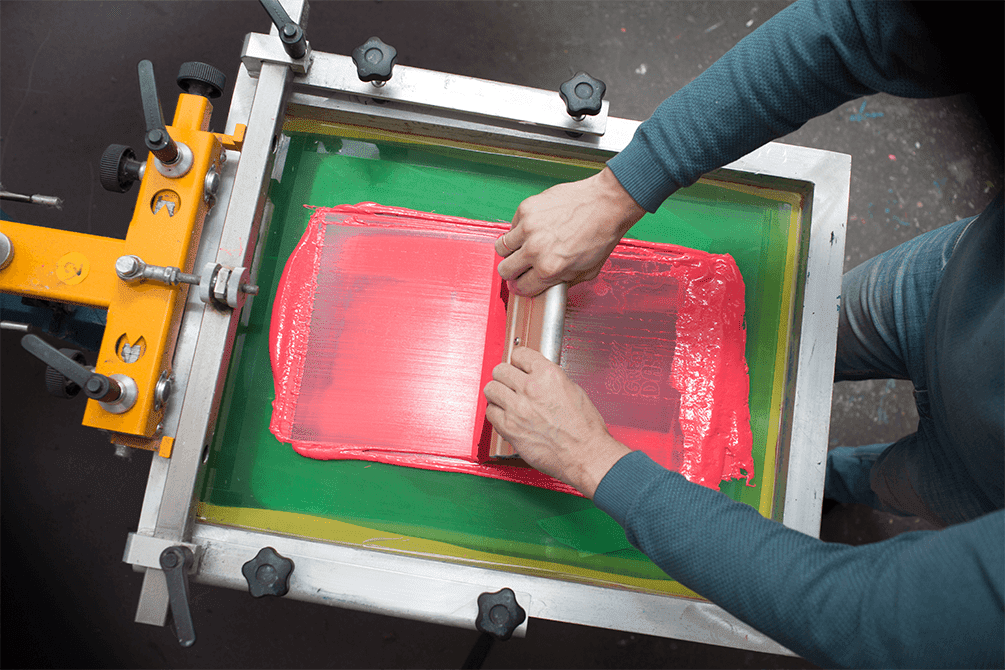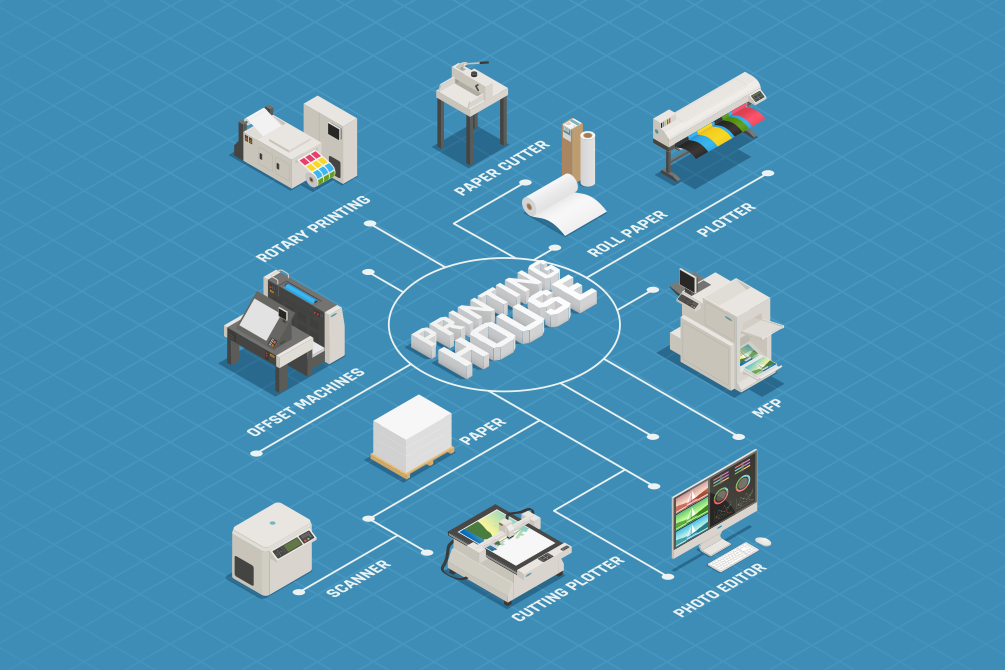The printing industry has evolved a lot over the years and has helped businesses to stay ahead of the curve and better sell their products. Additionally, other things like the intervention of technology made the process of printing faster, optimized, and fulfill the increasing demand of the customers.
Today, new things are introduced in the industry like inks, curing processes, machines, printing methods, and more. While some of the things bring revolution to the industry, some of them vanish over a period of time. Additionally, customers’ choice also changes rapidly and the new ways makes it possible to fulfill these demands.
Each of the printing processes are important and has its place to add. If you miss any of the phases, the prints are very likely to fade away. If you miss on the curing process or don’t do it properly then the print may fade away. But, don’t worry, here, we are going to see how proper curing processes can help your prints to last longer. Let’s see how using curing you will make screen prints last longer.
Quick Basics of Curing:
Screen printing curing is important to make your garments last longer. Various flash cure units are helpful to carry out the curing process. The correct technique to cure the prints depends on the ink type you are using. Mainly there are two types of ink: plastisol and water-based ink.
Plastisol ink:
Plastisol ink cures at 320 degree Fahrenheit and is widely known for their opacity and durability. They are useful when the customer needs vibrant colors. Another major reason behind it being a go-to solution for print owners is the accuracy. It is very easy to find the accurate colors from the large scale of colors. Additionally, there are no limitations when it comes to using different garment types. You can use the ink on any garment without having to worry about the print output. This shows the flexibility of the plastisol ink. It is easy to use and comes at an affordable price.
Water-based ink:
Water-based ink are useful when the garment needs to be soft. The major advantage of this ink is the breathability it provides to the garment. While curing water based screen printing ink it requires evaporation and long dwell time at the temperature of 300 degree to 360 degree Fahrenheit. It is costly compared to plastisol ink but eco-friendly as it is PVC free.
Going further, let’s look at the different ways to cure prints.
Different Ways to Cure a Print:
There are multiple ways to cure the print. Let’s look at these different ways of screen printing curing:
Heat Gun:
Screen printing heat guns are an essential part when it comes to flash cure print. Another name of heat gun is non-contact pyrometer. It is useful for checking the temperature of the print as it comes out from the dryer belt or when used with a flash cure unit.
Simply point the gun towards the shirts’ imprint and observe the reading. Hold down the button and you will read the temperature as it passes through the dryer. Whilst the heat gun will not provide you with the proper count, it is still useful in curing the dryer temperature and providing you with assurance.
Pro-tip: Screen printing heat gun is not a good option if you have used water-based ink.
Heat Press:
Heat Press is a conveyor dryer which does not have a conveyor belt. It is a new way to cure inks as it provides a stable heat source. Another important thing is, it sends a signal if there is fluctuation in temperature. If you are using printing vinyl, the heat press will be an excellent option.
It is very easy to print using a heat press ink system. If you are using plastisol ink, you just need to read the ink label and set the heat press to 20 to 30 degrees above the cure temperature. At a medium pressure put a teflon sheet on the print and press for 20 to 30 seconds. It will help you cure the garment appropriately and have a proper heat press.
Flash Dryer:
Flash dryers are the common way to cure t-shirts efficiently. They are more consistent compared to screen printing heat guns and press. Additionally, they have a compact design and are inexpensive to use. There are various types of flash cure units available and range from 16 X 16 to 28 X 28. If you are using multiple colors then having a flash dryer is a better option.
When you are using a flash dryer to cure the print, first you will have to consider variables like temperature of room, types of material, flash, and ink. A different type of platen affects the curing process because different materials will hold heat for either long or short time. The aluminum platen takes a while to heat up but holds the heat for a long period of time. A platen will hold the heat and will quickly achieve full cure since the garment receives from all the directions in the flash cure. You can easily cure plastisol inks but will need to add extra additives while curing water based screen printing ink.
Conveyor Dryer:
If you receive a high volume of orders every day then the conveyor dryer is the perfect way to do so. Conveyor dryer runs on multiple shirts through the time which helps speed up production. You just need to adjust the speed of the belt and heat accordingly to the material and ink you are using.
Once your conveyor dryer is running you can start placing them on the belt and start the curing process. Remember to check the temperature with the heat gun and use donut probes to make sure that ink cures properly.
Curing water based screen printing ink, takes a lot of time and you will need to force air on the conveyor dryer. Water based ink needs air movement to effectively drive the water out of the ink and move the steam on the outside of the dryer, it will use the heat to cure the ink. Without the proper air movement, most printers will either slow their belts down or run the shirts via the dryer multiple times.
Next up, let’s see the things one needs to take care while carrying out curing process:
Curing Process:
Temperature:
Fabrics play a vital role in defining the temperature you will be setting. For all fabrics, you will not go with the same temperature. The temperature depends on the fabric type, color, thickness, and ink application. Depending on the material you are using, you will define the temperature of the curing machine.
You need to keep an eye on the different dryer temperatures and other garments, at the same time keep the records of different dryer temperatures needed for different garments. For faster prints, you might need to run the conveyor dryer with an oven set at hot temperature. But, this might burn the entire fabric. So, make sure to first study your material properly and decide the temperature.
Dwelling Period:
Dwelling period is the time when the fabric is in the machine under the exposure of heat. Often people don’t take the curing process seriously due to the hasty process. But, if not done might result in lack of print quality and fades away.
Ink films are usually thin and require only 3 to 5 seconds to keep it under the oven heat for proper curing. It might need up to 60 seconds to ensure the ink is properly cured and ready to sell.
Avoid Extra Flash:
Flash is the short term application of heating between the print stages to quickly dry the ink before applying a new ink color over the previous ink layer. applying excessive flash with screen printing flash dryers can cause damage to the fabric and ink. Maximum flash temperature ranges 90 degree Celsius to 108 degree Celsius.
Control Dye Migration:
Dye migration is the process of excessive heating during the curing process which causes your ink to bleed through the garment. Thus, you need to control the dye migration by using correct inks and lowering the temperature.
Another method of controlling the dye-migration process is to use an ink that blocks the bleeding by absorbing migrating dyes before they reach the subsequent layer of ink.
Going further, let’s see some of the tests you can perform to check whether screen printing curing is proper or not.
Perform Various Tests on Fabrics:
Wash:
It is one of the best methods to ensure that the curing is done properly or not. Many screen printers do it while dealing with a big order or when the type of garment used is prone to have defects such as special effects, gel inks, etc.
Just put the laundry through the one wash test and if the print stays on without any defects then you can say the curing is perfect. If the print colors wash off then it is not cured perfectly. The amount of print which got degraded will give you an idea about the insufficient curing process. Often manufacturers prefer to wait for 24 to 48 hours before doing the wash test.
Stretching:
Stretching is another common practice to test your ink. Here, you will stretch the t-shirt until the one half of the capacity. If the print does not crack you can say the curing is done properly. It is an easy and quick way to check the curing quality. For testing you can select the print area i.e. 5 cm long. Stretch it slowly until you see a crack on the image and record the stretch length vs. cracking point.
Pro tip: A polyester fabric does not have elasticity so it is not eligible for stretch tests to determine the curing quality.
Rubbing:
This is another way to check the curing process. You can rub the colored portion of the fabric with white cock test cloth and then check the color transfer on the white cloth. Some of them have the simple white cloth for the test. But, still many experts recommend using a white crock test cloth for meaningful results.
Precautions to Take During Curing:
Check Moisture:
If your shirt is stored in the high humid area they will absorb the moisture up-to 100% cotton fabrics and this can cause ink curing problems. Mostly it happens with plastisol inks as it does not adhere to moist surface. It will be a good idea if you print in high humid conditions and run your shirts through the dryer before printing them. Further, it eliminates the moisture from them. Apart from this, you can even add a dehumidifier to your shop or air conditioning.
Check Garment Color:
The fabric types and color affects the fabric curing process. Dark colored shirts will cure faster than white and other light colored shirts. Whereas, white cotton shirts take longer compared to cure than black colored shirts. Thus, make sure which color you fabric is and you can expect time accordingly.
Adequate Dryer:
Allow your dryer and flash cure unit warm up before you begin production. Even if the dryer has a temperature read, it is still important to let the dryer warm up for at least 15 to 20 minutes. Before you keep the next t-shirt in printing make sure to let it dry up as it will provide better results.
Issues Faced During Curing Process:
The common issue organic blends see are bleeding and results in discoloring. Another issue is the ghosting which creates a soft halo around the prints. The shrinkage of the scorching problem has led to a screen. Getting the right cure can be a difficult task but a strong understanding of the basic curing needs and tests can provide you with a strong result of curing.
Conclusion:
Having long-lasting prints is an important part if you need to sell better products. We know going through the curing process, choosing the right flash cure unit for screen printing curing can be tardy tasks.
Ink tools play a vital role in selecting the type of flash unit care. Using the type of flash cure unit depends on whether you are curing water-based screen printing ink or plastisol ink. Lastly, if you want to provide your customers better customer service then going web to print is the best. Our tool can help you stay ahead of the competition and help you provide better service to customers. Not only this, your customers can easily create designs on their own and provide from large reservoirs of images, clip-arts, object handling, varied font types, and more. If you are planning to take your business online, we can help you set it up from the scratch.
All product and company names are trademarks™, registered® or copyright© trademarks of their respective holders. Use of them does not imply any affiliation with or endorsement by them.










Follow with us